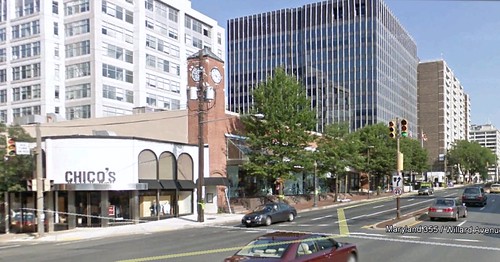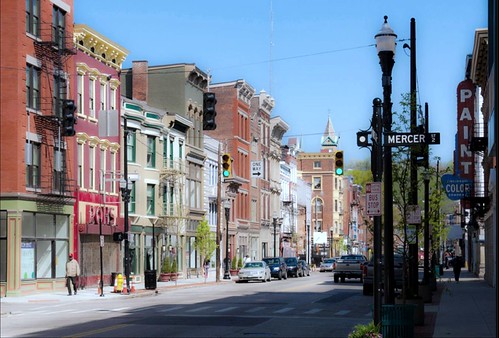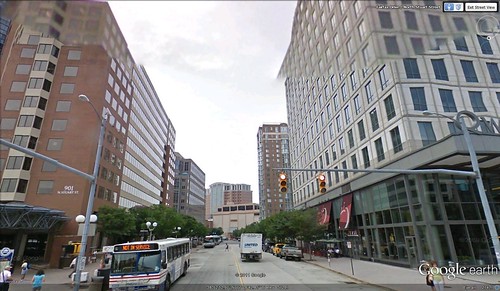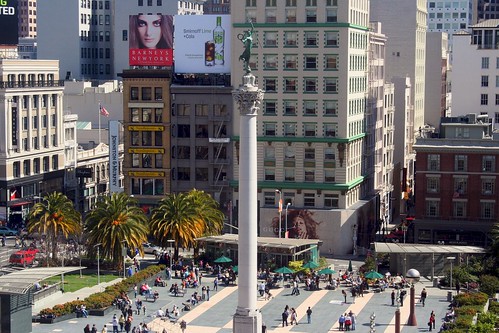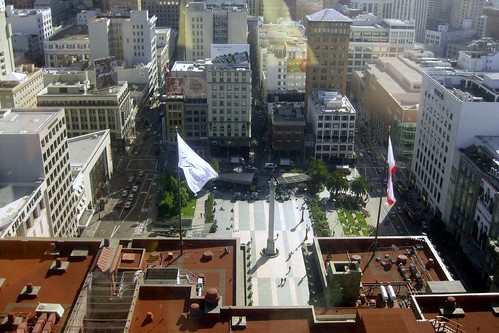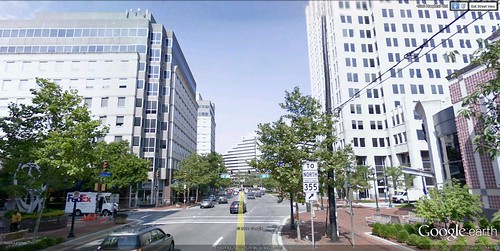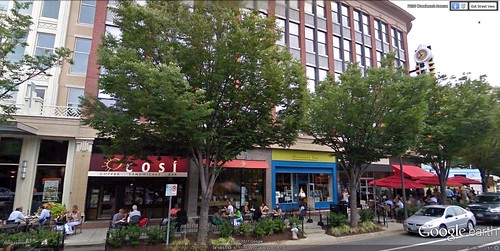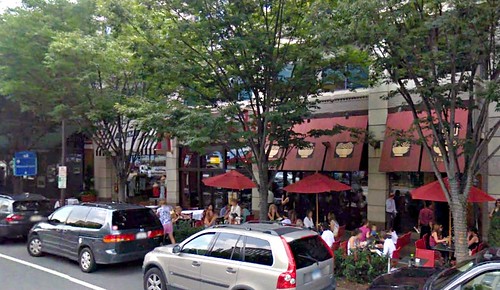More walkable urban development is good. But is it good enough?

Posted January 18, 2012 at 1:23PM
Where would you rather be? Here?
Or here?
Let’s try it again. This time assume you are an environmentalist who understands that we need more urban density in order to reduce suburban sprawl. You’re hoping to persuade a skeptical citizens’ group. Would you rather have something like this to show them?
Or something like this?
Sadly, the newer developments represent what passes for transit-oriented smart growth these days. I’ve been kind of a one-man band within the world of smart growth advocates saying that it’s not enough anymore just to advocate density. We should be advocating density that appeals to more people, that we and future generations can be proud of.
I know what some of you are thinking: my comparisons are unfair, pitting new, suburban neo-downtowns against a historic district and a mature, true downtown. To an extent, you’re right. But let’s take another look at San Francisco’s Union Square:
We’re looking at an older, complete neighborhood, to be sure. But there’s also something else going on: there’s a great public space, and the buildings are of varied heights, widths, scales, and styles. They are also varied in age, meaning that some older buildings were retained as newer ones came in.
This is an example of what architect Liz Dunn, director of the Preservation Green Lab for the National Trust for Historic Preservation, calls “urban grain.” In an interview with Julia Levitt, published on The Atlantic’s National Channel website, she elaborates:
“There are many possible interpretations of the phrase ‘urban grain’ or ‘granularity’ that have to do with the scale and composition of cities. A lot of work has gone into analyzing the street grid -- for example, the size of blocks within a grid. I'm personally most interested in block-scapes, and the elements that coexist within a block or set of blocks.
“I think there is a set of attributes here that is both recognizable and useful for policy making. I think we could be measuring, for example, the economic and social activity that occurs on blocks that have a larger number and variety of skinnier buildings, compared to what you find on blocks occupied by large, homogeneous building fronts. Measuring how the pattern and mix of buildings impacts urban activity would provide a way to assign value to organic, incremental development that would be more quantitative than the cultural arguments for preservation, which would in turn inform land use policies. There are many win-win solutions for balancing urban grain with new development.”
While Dunn primarily considers the issue with respect to finding the proper mix of old and new buildings and styles, I think she’s on to something that also applies more broadly. It may be more challenging to develop and zone blocks for variety, or to construct and implement public policy that fosters it, than it is to accept uniformity – and in this economy it’s challenging to do most anything with regard to real estate; but, if we fail to insist on the kinds of places that people instinctively love, we won’t succeed, and we won’t deserve to, either. I’m not sure that some of the buildings shown at the top of the post aren’t just more sprawl in a vertical rather than horizontal form.
Here’s perhaps a more fair comparison, because these two sets of buildings are both relatively recently constructed and, in fact, within walking distance of each other and the same transit station. Both photos were taken from Google Earth’s Street View feature. Compare this one:
To this one:
For me, it’s a completely different feel. The second development, part of Bethesda, Maryland’s terrific Bethesda Row area, is not just more inviting but also a bit smaller in scale, at five or six stories tops. But that’s part of it, in my opinion. To increase density enough to make a difference, we don’t always need to maximize it. Much of the time a moderate amount of human-scaled urbanism will be far more appropriate than a high-rise. This isn’t, or shouldn’t be, just about calculations of units per acre or square footage. It’s also about what feels right to people.
Dunn seems to agree:
“In cities like Seattle, Portland, and San Francisco, some of the most economically and socially successful neighborhoods are the ones with a stock of older, three- to six-story buildings. These neighborhoods have unbelievable street life and entrepreneurial business activity, and they also already have density between 30 and 100 residential units per acre. According to the Urban Land Institute, the average density of urbanized areas in the United States is only seven units per acre.”
Here's another view of Bethesda Row, across the street from the photo above:
I’ll indulge one more quote from Dunn, whom I have met and like. In an article published in the magazine of the Seattle chapter of the American Institute of Architects, she stresses the importance of making smart growth better:
“What all of us who care about growth management and climate change need to keep in mind is that density is merely a means to an end: to make our cities successful, attractive places to live and work. A recent Pew Research survey showed that, for a variety of lifestyle reasons, American cities still compete poorly with their own suburbs in terms of attracting all but the young, the old and the poor. If the urban neighborhoods we create turn out to be as generic as our suburban ones, we certainly can't expect that to change.”
I completely agree.
Moderating and improving the form of density is not the only improvement we need, of course. "Smart growth" without green infrastructure, green buildings, parks and great public spaces, just to name a few others, isn’t particularly worthy of the name in my opinion. But I’ll get back to those topics on another day.
Move your cursor over the images for credit information.
Please also visit NRDC’s Sustainable Communities Video Channel.
